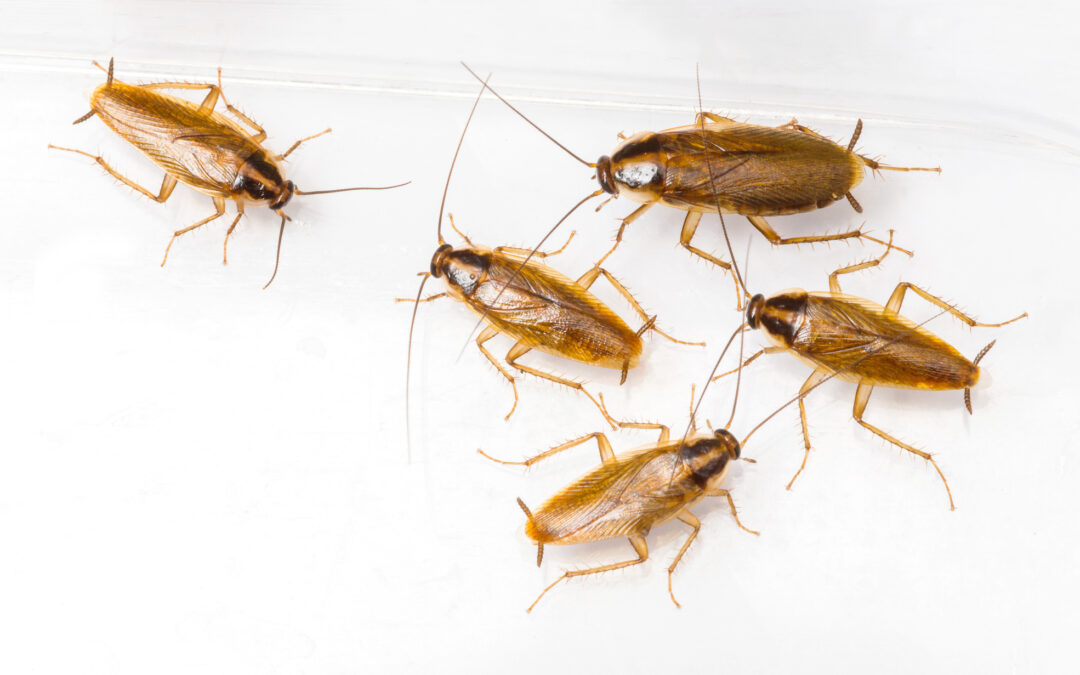The most common cockroach in Florida and the most common cockroach in the whole country, if not the world, is hands down the German cockroach. If you discover several roaches at a time it’s likely the German cockroach.
The University of Florida’s entomologists say, “The German cockroach is the cockroach of concern, the species that gives all other cockroaches a bad name. It occurs in structures throughout Florida, and is the species that typically plagues multifamily dwellings.”
While the more fabled large American cockroach or “palmetto bug” prefers living outdoors, German roaches are right at home inside your house. They will quickly move from one room to another, laying eggs all along the way. One female only needs to mate one time in order to reproduce all her life. This means she is able to produce a generation that can have tens of thousands more offspring within one year. That’s an easy infestation that can be nearly impossible to stop without careful, persistent treatment.
German cockroaches are great little hitchhikers. They can come into your home by way of paper bags and cardboard boxes from the store, used furniture, and used appliances. I’ve seen them infest a coffee maker deeming it only for the rubbish heap.
How to identify German cockroaches
- Light brown or tan bodies
- About half an inch in length
- Horizontal stripes behind their heads
- Six spined legs
German Cockroaches Live Everywhere
The German cockroach is the most common cockroach in the world and lives everywhere in association with humans. In fact, they are unable to survive away from humans or human activity. It seems that only truly cold temperatures can limit German cockroach survival. Studies have shown that German cockroaches were unable to colonize inactive ships during cool temperatures and could not survive in homes without central heating in northern climates. Yet where there is water, food, and a place to hide German cockroaches easily establish populations.
The Prolific German Cockroach
The German cockroach has three life stages, and the entire life cycle is completed in about 100 days. However, factors such as temperature, nutritional status, and strain differences may influence the time required to complete a life cycle. German cockroaches breed continuously with many overlapping generations present at any one time.
Eggs are carried in an egg case by the female until just before they hatch. If you care to look closely at a female German cockroach you will see the egg case protruding from the bottom end. A typical egg case contains 30 to 40 eggs. The egg case is a tiny, brown, purse-shaped capsule. It is about 8 mm long, 3 mm high, and 2 mm wide. They look like little brown pills and you might find them stuck to a surface.
Under ideal conditions, population growth has been shown to be exponential. Actively growing field populations are comprised of 80 percent nymphs and 20 percent adults. The German cockroach is omnivorous, eating table scraps, pet food, and even book bindings.
The ICK FACTOR and Health
German cockroaches ruin food or food products with their feces and defensive secretions, physically transport and often harbor pathogenic organisms, may cause severe allergic responses, and in extremely heavy infestations have been reported to bite humans and feed on food residues on the faces of sleeping humans. In addition, some scientists suggest that German cockroach infestations may cause human psychological stress and that the stigma associated with infestations alters human behavior. For example, people with infested houses do less entertaining, and avoid the kitchen at night for fear of encountering a cockroach.
How to Get Rid of the Most Common Cockroach
Most people associate cockroach infestations with poor sanitary conditions and typically go to excessive lengths to get rid of them from their houses. Of course we recommend calling a professional pest control service like Heath Pest Control
We have insecticide treatments available in a wide variety of formulations including baits, sprays (emulsifiable concentrates, wettable powders, microencapsulated), dusts, and powders.) We can also use nontoxic and low-toxic alternatives for German cockroach control. Sticky traps often help monitor or reduce population size as well.
What can you do?
Roaches of all types are looking for food, water, and shelter.
- Eliminate food and water sources
- Clear the clutter to reduce the chances of hidden infestation
- Seal cracks and crevices to reduce their easy access and hiding places
Read our full overview of dealing with your roach problem.
Contact us at Heath Pest Control for quick intervention and ongoing prevention.



